Filter by
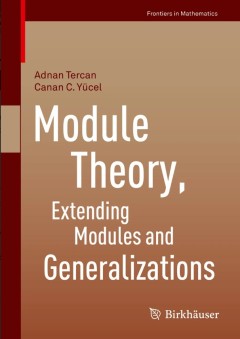
Module Theory, Extending Modules and Generalizations
The main focus of this monograph is to offer a comprehensive presentation of known and new results on various generalizations of CS-modules and CS-rings. Extending (or CS) modules are generalizations of injective (and also semisimple or uniform) modules. While the theory of CS-modules is well documented in monographs and textbooks, results on generalized forms of the CS property as well as dual…
- Edition
- 1
- ISBN/ISSN
- 978-3-0348-0952-8
- Collation
- -
- Series Title
- Frontiers in Mathematics
- Call Number
- -

The Structure and Stability of Persistence Modules
This book is a comprehensive treatment of the theory of persistence modules over the real line. It presents a set of mathematical tools to analyse the structure and to establish the stability of such modules, providing a sound mathematical framework for the study of persistence diagrams. Completely self-contained, this brief introduces the notion of persistence measure and makes extensive use o…
- Edition
- -
- ISBN/ISSN
- 978-3-319-42545-0
- Collation
- -
- Series Title
- -
- Call Number
- -
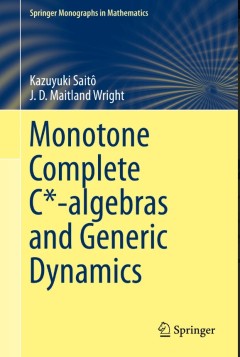
Monotone Complete C*-algebras and Generic Dynamics
This monograph is about monotone complete C*-algebras, their properties and the new classification theory. A self-contained introduction to generic dynamics is also included because of its important connections to these algebras. Our knowledge and understanding of monotone complete C*-algebras has been transformed in recent years. This is a very exciting stage in their development, with much d…
- Edition
- 1
- ISBN/ISSN
- 978-1-4471-6773-0
- Collation
- XI, 257
- Series Title
- Springer Monographs in Mathematics
- Call Number
- -
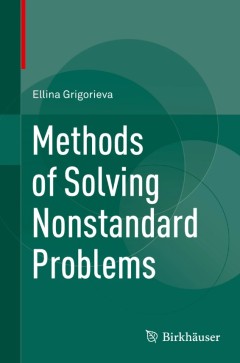
Methods of Solving Nonstandard Problems
This book, written by an accomplished female mathematician, is the second to explore nonstandard mathematical problems – those that are not directly solved by standard mathematical methods but instead rely on insight and the synthesis of a variety of mathematical ideas. It promotes mental activity as well as greater mathematical skills, and is an ideal resource for successful preparation fo…
- Edition
- 1
- ISBN/ISSN
- 978-3-319-19886-6
- Collation
- XXI, 327
- Series Title
- -
- Call Number
- -
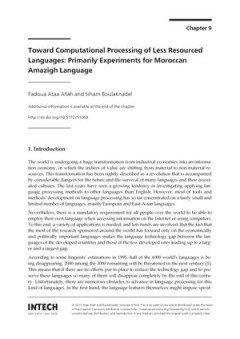
Chapter Measures of Pseudorandomness
In the second half of the 1990s Christian Mauduit and András Sárközy [86] introduced a new quantitative theory of pseudorandomness of binary sequences. Since then numerous papers have been written on this subject and the original theory has been generalized in several directions. Here I give a survey of some of the most important results involving the new quantitative pseudorandom measures o…
- Edition
- -
- ISBN/ISSN
- 9783110283600
- Collation
- -
- Series Title
- -
- Call Number
- -

Computer Algebra in Scientific Computing
Although scientific computing is very often associated with numeric computations, the use of computer algebra methods in scientific computing has obtained considerable attention in the last two decades. Computer algebra methods are especially suitable for parametric analysis of the key properties of systems arising in scientific computing. The expression-based computational answers generally pr…
- Edition
- -
- ISBN/ISSN
- 9783039217311
- Collation
- -
- Series Title
- -
- Call Number
- -

College Algebra
College Algebra provides a comprehensive exploration of algebraic principles and meets scope and sequence requirements for a typical introductory algebra course. The modular approach and richness of content ensure that the book meets the needs of a variety of courses. College Algebra offers a wealth of examples with detailed, conceptual explanations, building a strong foundation in the material…
- Edition
- -
- ISBN/ISSN
- -
- Collation
- -
- Series Title
- -
- Call Number
- -
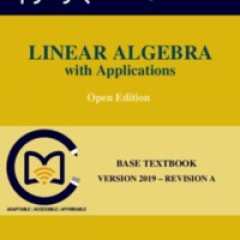
Linear Algebra with Applications. Open Edition
his textbook is an introduction to the ideas and techniques of linear algebra for first- or second-year students with a working knowledge of high school algebra. The contents have enough flexibility to present a traditional introduction to the subject, or to allow for a more applied course. Chapters 1–4 contain a onesemester course for beginners whereas Chapters 5–9 contain a second semes…
- Edition
- -
- ISBN/ISSN
- -
- Collation
- -
- Series Title
- -
- Call Number
- 500
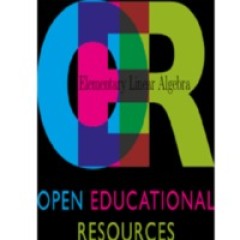
Linear Algebra, Theory And Applications
his is a book on linear algebra and matrix theory. While it is self contained, it will work best for those who have already had some exposure to linear algebra. It is also assumed that the reader has had calculus. Some optional topics require more analysis than this, however. I think that the subject of linear algebra is likely the most significant topic discussed in undergraduate mathematics c…
- Edition
- -
- ISBN/ISSN
- -
- Collation
- -
- Series Title
- -
- Call Number
- 500

Elementary Linear Algebra
This is an introduction to linear algebra. The main part of the book features row operations and everything is done in terms of the row reduced echelon form and specific algorithms. At the end, the more abstract notions of vector spaces and linear transformations on vector spaces are presented. However, this is intended to be a first course in linear algebra for students who are sophomores or j…
- Edition
- -
- ISBN/ISSN
- -
- Collation
- -
- Series Title
- -
- Call Number
- 500
 Computer Science, Information & General Works
Computer Science, Information & General Works  Philosophy & Psychology
Philosophy & Psychology  Religion
Religion  Social Sciences
Social Sciences  Language
Language  Pure Science
Pure Science  Applied Sciences
Applied Sciences  Art & Recreation
Art & Recreation  Literature
Literature  History & Geography
History & Geography